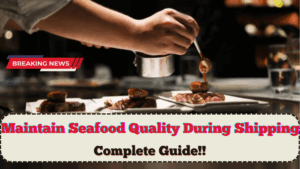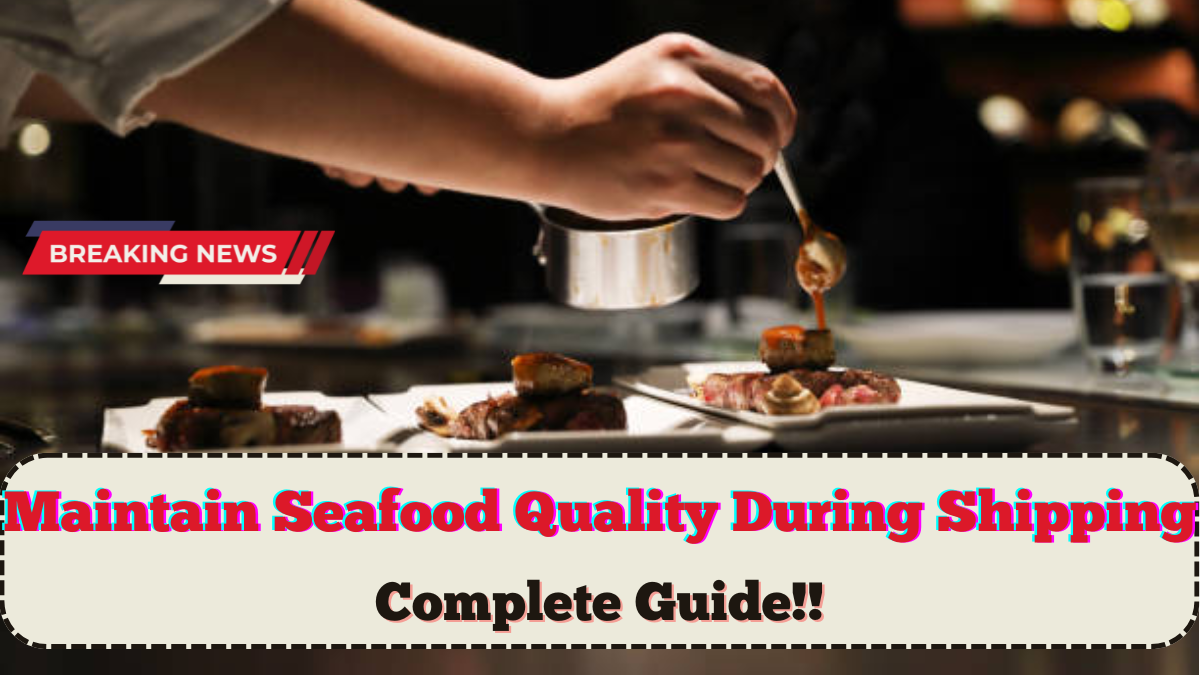Shipping seafood across local and international markets requires precision, care, and technology. In 2025, the global seafood export industry is booming, but its success depends heavily on one crucial factor — how to maintain seafood quality during shipping. Whether it’s shrimp, salmon, crab, or mollusks, preserving freshness during transit ensures customer satisfaction, regulatory compliance, and brand trust.
Because seafood is perishable and highly sensitive to temperature fluctuations, any lapse in packaging, timing, or transportation can lead to spoilage, bacterial growth, and financial loss. That’s why exporters and logistics partners are increasingly investing in state-of-the-art cold chain infrastructure, smart packaging, and real-time monitoring systems.

Why Maintaining Seafood Quality Matters During Transit
Understanding how to maintain seafood quality during shipping is critical because seafood begins deteriorating from the moment it’s harvested. Here’s why it matters:
-
Preserves flavor, texture, and appearance for end consumers
-
Ensures food safety by preventing microbial contamination
-
Meets global export regulations (e.g., EU, USFDA, Codex)
-
Reduces rejections and spoilage-related losses
-
Protects brand reputation and customer loyalty
Even a one-degree rise in temperature beyond optimal levels can accelerate spoilage. Hence, each step — from processing to delivery — must be precisely controlled.
Cold Chain Essentials for Seafood Exporters
The cold chain is the backbone of seafood logistics. Here’s a breakdown of critical elements that define how to maintain seafood quality during shipping:
1. Immediate Chilling Post-Harvest
-
Ice slurry or refrigerated seawater used immediately after catch
-
Brings product temperature down to 0°C–2°C within minutes
-
Reduces enzymatic and bacterial activity from the source
2. Temperature-Controlled Packaging
-
Thermo-insulated containers with gel packs or dry ice
-
Modified atmosphere packaging (MAP) for longer freshness
-
Vacuum-sealed pouches to minimize air and microbial contact
3. Refrigerated Storage and Loading
-
Cold rooms at 0°C–4°C for fresh; −18°C or lower for frozen seafood
-
Pre-cooled transport containers to avoid temperature shocks
-
Strict hygiene and handling protocols during loading
4. Reefer Containers and GPS Monitoring
-
Use of reefer containers with automated temperature regulation
-
GPS and IoT devices to track location, humidity, and temperature
-
Alert systems in case of deviations for real-time intervention
5. Just-In-Time Logistics
-
Coordinated dispatch planning with minimal layovers
-
Real-time route optimization for shortest delivery time
-
Seamless port clearances with pre-submitted documents
These cold chain practices ensure that seafood arrives fresh, safe, and market-ready — even after long international journeys.
Packaging Innovations That Preserve Quality
Choosing the right packaging is central to how to maintain seafood quality during shipping. Here are the most effective packaging types used in 2025:
| Packaging Type | Use Case | Key Benefits |
|---|---|---|
| EPS Foam Boxes | Fresh fish, crustaceans | Lightweight, insulation, recyclable |
| Vacuum-Sealed Pouches | Fillets, shellfish | No air exposure, extends shelf life |
| MAP (Modified Atmosphere) | High-value seafood, sushi items | Preserves taste and color |
| Thermoforming Trays | Display-grade seafood | Leak-proof and presentation-friendly |
| Dry Ice + Insulated Bags | Frozen seafood exports | Maintains −18°C or below during transit |
Proper packaging ensures consistent product quality, regardless of distance or climate conditions during shipping.
Best Practices for Exporters and Logistics Teams
Here are essential daily practices for exporters to ensure they’ve mastered how to maintain seafood quality during shipping:
-
Calibrate temperature devices daily before shipment
-
Train all handling staff in hygiene, cold chain, and packaging protocols
-
Maintain accurate temperature logs from source to delivery
-
Conduct periodic audits of shipping partners and reefer containers
-
Use temperature indicator stickers inside packages for recipient assurance
-
Label packages with “Perishable – Keep Refrigerated/Frozen” for handling clarity
Proactive measures reduce rejection rates at customs, build trust with buyers, and uphold international quality standards.
FAQs
How to maintain seafood quality during shipping?
To maintain quality, seafood must be immediately chilled, packed in insulated containers, shipped in reefer trucks or containers, and monitored continuously using IoT devices.
What is the ideal temperature for shipping seafood?
Fresh seafood should be maintained between 0°C and 4°C, while frozen seafood must remain at −18°C or below throughout the supply chain.
Which packaging is best for seafood exports?
EPS foam boxes with ice packs, vacuum-sealed bags, and MAP trays are among the best options for preserving seafood during long-distance shipping.
What is the role of cold chain logistics in seafood export?
Cold chain logistics ensure temperature consistency, prevent spoilage, and maintain freshness from harvesting to delivery, making it essential for seafood export quality.
Can temperature fluctuations ruin seafood quality?
Yes, even minor temperature deviations can lead to bacterial growth, flavor loss, and texture changes, leading to rejection or spoilage.
Click here to know more.
